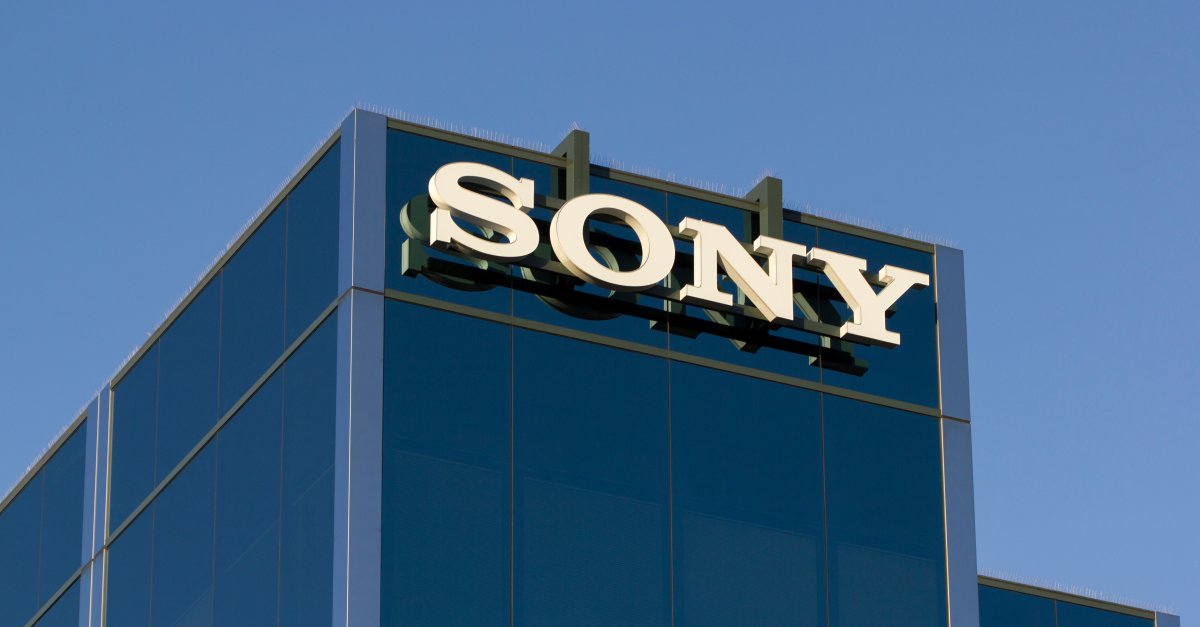Home>Finance>Effect On Capital Structure When Stock Repurchase


Finance
Effect On Capital Structure When Stock Repurchase
Published: December 25, 2023
Discover the impact of stock repurchase on capital structure in the world of finance. Understand the implications and strategies behind this financial decision.
(Many of the links in this article redirect to a specific reviewed product. Your purchase of these products through affiliate links helps to generate commission for LiveWell, at no extra cost. Learn more)
Table of Contents
Introduction
When a company considers ways to optimize its capital structure, one strategy that often comes to mind is stock repurchase. Stock repurchase, also known as share buyback, is a financial maneuver where a company buys back its own shares from the open market or existing shareholders. This process enables the company to reduce the number of outstanding shares in circulation.
The decision to engage in stock repurchase can have a significant impact on a company’s capital structure, which refers to the proportion of debt and equity used to finance its operations. By repurchasing shares, a company alters its capital structure by increasing the proportion of debt relative to equity. Understanding the effects of stock repurchase on capital structure is crucial for investors, financial analysts, and company executives alike.
This article will explore the concept of stock repurchase, the factors that influence a company’s capital structure, and the effects that stock repurchase can have on it. Additionally, we will analyze the advantages and disadvantages of stock repurchase and provide case studies to illustrate the impact on capital structure in real-world scenarios.
Definition of Stock Repurchase
Stock repurchase, also known as share buyback, is the process by which a company buys back its own shares from the open market or existing shareholders. This involves the company using its available funds to repurchase its outstanding shares, effectively reducing the number of shares held by investors. Stock repurchase can be carried out in two primary ways:
- Open Market Repurchase: In this method, the company buys back shares from the open market, just like any other investor. The company specifies the maximum price it is willing to pay per share, and once the shares are repurchased, they become treasury stock, which is no longer considered outstanding.
- Shareholder Repurchase: In this method, the company offers to buy back shares directly from existing shareholders at a specified price and within a defined time frame. Shareholders then have the option to sell their shares back to the company at the agreed-upon price.
Stock repurchase can be done for various reasons, such as improving financial ratios, enhancing shareholder value, signaling confidence to the market, or offsetting dilution caused by employee stock options or convertible securities. It is important to note that stock repurchase is different from a dividend payment, as it involves the actual purchase of shares rather than distributing cash to shareholders.
Stock repurchase can vary in scale, from a small buyback of a few shares to a significant repurchase program that spans several months or even years. The decision to repurchase shares is typically made by the company’s management and is authorized by the board of directors. The company may also seek approval from its shareholders before implementing a large-scale repurchase program.
Overall, stock repurchase is a strategic financial maneuver that allows companies to utilize their excess cash to buy back their own shares, influencing their capital structure and potentially benefiting shareholders.
Factors Influencing Capital Structure
Capital structure refers to the way a company chooses to finance its operations through a combination of debt and equity. The decision on the optimal capital structure depends on various factors that affect the company’s financial position and risk profile. Here are some key factors that influence capital structure:
- Business Risk: Business risk refers to the inherent risk associated with a company’s operations and industry. Companies operating in stable and less volatile industries may prefer to have a higher proportion of debt in their capital structure, as they have more predictable cash flows. On the other hand, companies in high-risk industries may rely more on equity, reducing their debt levels to mitigate risk.
- Financial Flexibility: Financial flexibility, or the ability to raise funds when needed, is an important consideration in capital structure decisions. Companies with a strong financial position and easy access to credit markets may opt for higher debt levels, as they can easily repay or refinance their debt obligations. Conversely, companies with limited financial flexibility may rely more on equity or lower levels of debt.
- Tax Considerations: Tax considerations can play a significant role in shaping a company’s capital structure. Interest paid on debt is typically tax-deductible, while dividends paid to shareholders are not. As a result, companies with high tax rates may choose to have a higher proportion of debt in their capital structure to minimize tax liabilities and enhance their after-tax earnings.
- Industry Norms: Industry standards and norms can also influence a company’s capital structure decisions. Companies often look at their peers’ capital structures within the same industry to determine the optimal mix of debt and equity. Deviating too far from industry norms may impact the company’s competitiveness and access to capital markets.
- Cost of Capital: The cost of capital, which represents the cost a company incurs to finance its operations, is a key factor in determining capital structure. Companies aim to minimize their overall cost of capital while balancing the associated risks. Higher debts can lead to higher interest expenses, increasing the cost of capital. Conversely, leveraging equity may result in dilution for existing shareholders and potentially increase the cost of equity.
These factors, among others, play a crucial role in shaping a company’s capital structure. It is important for companies to carefully evaluate these factors and strike the right balance between debt and equity to maintain a sustainable and optimal capital structure.
Effect of Stock Repurchase on Capital Structure
Stock repurchase has a direct impact on a company’s capital structure, as it alters the proportion of debt and equity used to finance its operations. When a company repurchases its own shares, it reduces the number of outstanding shares available in the market. This decrease in outstanding shares has a twofold effect on the capital structure:
- Reduced Equity: By repurchasing shares, the company effectively reduces the amount of equity in its capital structure. This reduction in equity can lead to a higher debt-to-equity ratio, as the proportion of debt relative to equity increases. As a result, the company becomes more leveraged, meaning it relies more on debt financing compared to equity financing.
- Increased Earnings per Share (EPS): Another effect of stock repurchase is the potential increase in earnings per share (EPS). When a company buys back its own shares, the total number of outstanding shares decreases, but the earnings remain the same (assuming no change in profitability). As a result, the company’s earnings are distributed over a smaller number of shares, leading to a higher EPS. This can benefit existing shareholders by signaling increased value and potentially boosting the company’s stock price.
The effect of stock repurchase on capital structure can be more pronounced if the company finances the buyback through debt issuance. By taking on debt to repurchase shares, the company further increases its debt levels, which can lead to a higher debt-to-equity ratio and potential financial risks.
It’s important to note that while stock repurchase can impact a company’s capital structure, the overall financial health and performance of the company are crucial in determining the long-term implications. Companies must carefully assess the potential effects of stock repurchase on their financial position and consider the impact on their ability to meet debt obligations, sustain operations, and continue to invest in growth opportunities.
Ultimately, stock repurchase can be a strategic tool for companies to optimize their capital structures and deliver value to shareholders. However, it should be done judiciously, taking into account the specific financial circumstances, goals, and risk tolerance of the company.
Advantages of Stock Repurchase
Stock repurchase can offer several advantages for companies, shareholders, and even the overall market. Here are some key advantages of stock repurchase:
- Enhanced Shareholder Value: By repurchasing shares, a company can distribute its excess cash to existing shareholders. This reduces the number of outstanding shares, which in turn can increase earnings per share (EPS) and potentially boost the stock price. Shareholders benefit from the increase in value and can potentially see a higher return on their investment.
- Improved Financial Ratios: Stock repurchase can improve certain financial ratios, such as earnings per share (EPS), return on equity (ROE), and price-to-earnings (P/E) ratio. Higher EPS and ROE indicate improved profitability and efficiency, while a lower P/E ratio suggests that the stock is relatively undervalued. These improved financial ratios can enhance the company’s perceived financial strength and attractiveness to investors.
- Signaling Confidence: A company’s decision to repurchase its own shares can serve as a signal to the market that management has confidence in the company’s future prospects. It demonstrates that the company believes its stock is undervalued and that it has the financial resources to make the repurchase. This can help boost investor confidence and generate positive sentiment around the company.
- Tax Efficiency: Stock repurchase can be a tax-efficient way for a company to return value to shareholders. Unlike dividends, which are typically subject to taxes, capital gains on stock repurchase may be taxed at a lower rate. This tax efficiency can benefit both the company and its shareholders.
- Flexibility in Capital Structure: Stock repurchase provides companies with flexibility in managing their capital structure. It allows them to optimize the mix of debt and equity financing to suit their financial goals and risk appetite. By reducing outstanding shares, the company effectively increases its debt-to-equity ratio, which can be advantageous in certain situations, such as when seeking lower-cost debt financing or when trying to boost financial leverage.
These advantages make stock repurchase an appealing strategy for companies looking to enhance shareholder value, improve financial metrics, and signal confidence to the market. However, it is essential for companies to carefully evaluate their financial position, cash flow, and long-term growth prospects before implementing a stock repurchase program.
Disadvantages of Stock Repurchase
While stock repurchase can offer several advantages, there are also some potential disadvantages and risks that companies should consider before implementing a buyback program. Here are some key disadvantages of stock repurchase:
- Opportunity Cost: When a company uses its available funds to repurchase shares, it reduces the capital that could have been used for other purposes, such as research and development, acquisitions, or capital investments. This opportunity cost can limit the company’s ability to invest in growth opportunities that could potentially generate higher returns in the long run.
- Financial Risk: If a company finances its stock repurchase through debt issuance, it increases its debt levels. This raises the company’s financial risk, as it becomes more leveraged and more susceptible to changes in interest rates or economic downturns. High debt levels can pose challenges in meeting debt obligations and affect the company’s creditworthiness.
- Stock Overvaluation: Stock repurchase programs are often initiated when a company believes its stock is undervalued. However, there is a risk that the company may overpay for its own shares if the market valuation is inflated. Overpaying for shares can erode shareholder value and lead to negative repercussions for the company’s financial performance.
- Reduced Liquidity: Repurchasing shares reduces the number of outstanding shares available for trading in the market. This reduction in liquidity may decrease the ease of buying or selling shares, potentially negatively impacting shareholders who wish to exit their positions or new investors looking to enter the stock.
- Market Perception: Stock repurchases can sometimes be viewed negatively by investors and market participants. Some may interpret company buybacks as a lack of investment opportunities or a sign that management is running out of growth options. This perception may create doubt and affect the market’s confidence in the company’s future prospects.
It is important for companies to carefully assess these disadvantages and weigh them against the potential benefits when considering a stock repurchase program. The decision should align with the company’s long-term strategic goals, financial position, and market conditions.
Additionally, companies should adhere to regulatory guidelines and ensure that the stock repurchase program is implemented in a fair and transparent manner to protect the interests of shareholders and maintain market integrity.
Case Studies on the Effect of Stock Repurchase on Capital Structure
Examining real-world examples can provide valuable insights into the impact of stock repurchase on a company’s capital structure. Here are two case studies showcasing the effect of stock repurchase:
Case Study 1: XYZ Corporation
XYZ Corporation, a technology company, implemented a stock repurchase program to optimize its capital structure. The company believed its shares were undervalued and sought to enhance shareholder value. Over a period of two years, XYZ Corporation repurchased a significant number of its outstanding shares.
As a result of the stock repurchase, XYZ Corporation experienced the following effects on its capital structure:
- Reduced Equity: The repurchased shares were retired and classified as treasury stock, reducing the number of outstanding shares. This led to a decrease in equity and an increase in the company’s debt-to-equity ratio.
- Increased EPS: With a reduced number of outstanding shares, XYZ Corporation’s earnings were distributed over a smaller shareholder base, resulting in an increase in earnings per share (EPS). This positively impacted the company’s financial ratios and signaled improved profitability.
Overall, the stock repurchase program helped XYZ Corporation optimize its capital structure, improve financial performance, and create shareholder value.
Case Study 2: ABC Bank
ABC Bank, a financial institution, implemented a stock repurchase program as part of its capital optimization strategy. The bank aimed to reduce the number of outstanding shares and enhance its financial metrics.
Upon implementing the stock repurchase program, ABC Bank observed the following effects on its capital structure:
- Reduced Equity: The bought-back shares were retired, resulting in a reduction in the bank’s equity. This resulted in a higher debt-to-equity ratio, as the proportion of debt increased relative to equity.
- Improved Financial Ratios: The stock repurchase led to an increase in earnings per share (EPS) and return on equity (ROE), indicating improved profitability and efficiency. These improved financial ratios enhanced the bank’s perceived financial strength and attractiveness to investors.
Despite these positive effects, ABC Bank also faced potential disadvantages associated with stock repurchase, such as the opportunity cost of using funds for buybacks instead of other investments and the risks associated with increased financial leverage.
These case studies highlight the diverse outcomes and implications of stock repurchase on capital structure. It is essential for companies to evaluate their specific circumstances and goals before implementing a stock repurchase program, considering both the potential benefits and disadvantages.
Conclusion
Stock repurchase, as a strategy to optimize capital structure, can have significant implications for companies, shareholders, and the overall market. By repurchasing its own shares, a company can alter its capital structure by reducing equity and potentially increasing debt levels. This can lead to improved financial ratios, enhanced shareholder value, and a signaling effect of confidence to the market.
However, there are also potential disadvantages and risks associated with stock repurchase. These include the opportunity cost of allocating funds to buybacks instead of other investments, increased financial risk due to higher debt levels, and potential market perception challenges.
Ultimately, the decision to engage in stock repurchase should be carefully evaluated, taking into consideration various factors such as business risk, financial flexibility, tax considerations, industry norms, and the cost of capital. Companies must assess their financial position, long-term growth prospects, and overall goals to determine the optimal mix of debt and equity financing in their capital structure.
Case studies illustrate the diverse effects of stock repurchase on capital structure, showcasing the potential benefits and trade-offs. These real-world examples highlight the need for companies to analyze their specific circumstances, market conditions, and risk tolerance before implementing a stock repurchase program.
In conclusion, stock repurchase can be a strategic financial maneuver that companies use to optimize their capital structures, enhance shareholder value, and improve financial metrics. However, it should be approached with careful consideration of the benefits, risks, and long-term implications to ensure a balanced and sustainable approach to capital management.














